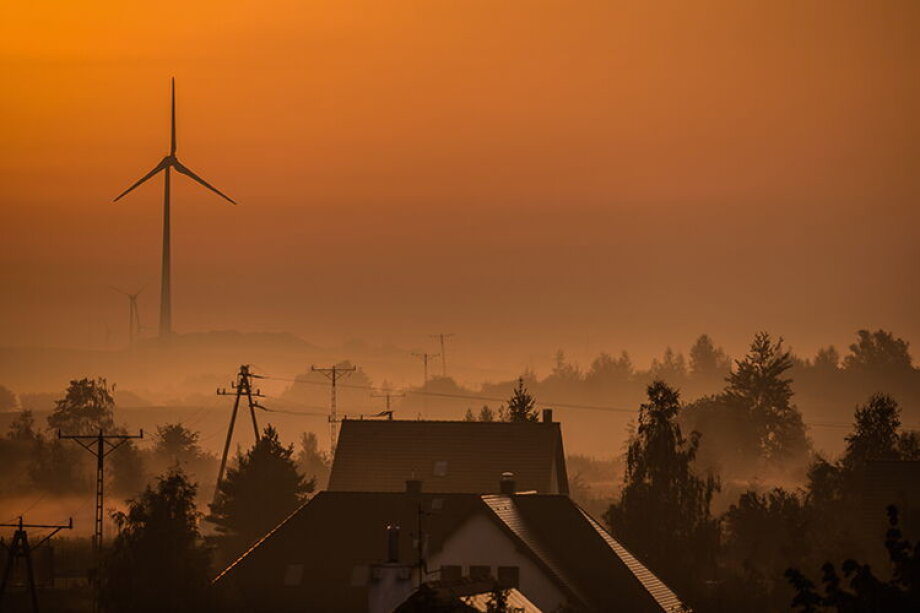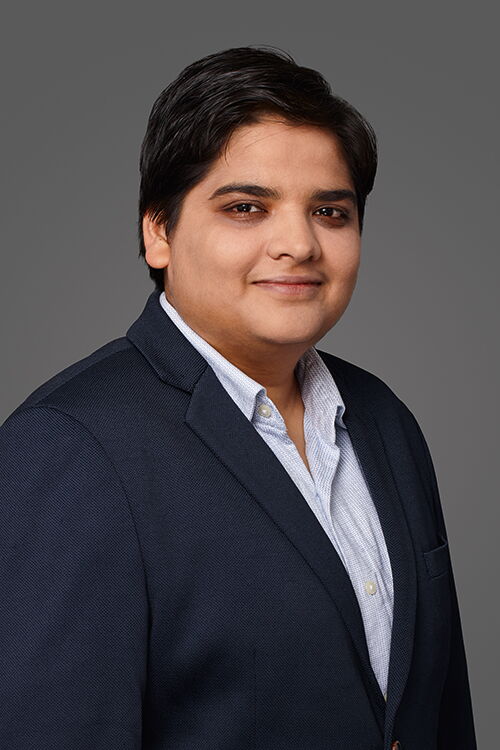Don’t be afraid of failure
WBJ sat down with Sonam Parashar, a postdoc researcher at IDEAS NCBR to talk about the opportunities and challenges of renewable energy in Poland, and how AI can even the playing field. Interview by Beata Socha

WBJ sat down with Sonam Parashar, a postdoc researcher at IDEAS NCBR to talk about the opportunities and challenges of renewable energy in Poland, and how AI can even the playing field. Interview by Beata Socha

WBJ: What’s the one trait that every scientist should have?
Sonam Parashar: A good scientist should not be afraid of failure and should be persistent and patient.
How do you think this mindset reconciles with working in Poland, and a publicly-funded institution, like IDEAS NCBR?
Research is incomplete without experiments, and experiments do not guarantee success but provide learning to improve further. IDEAS NCBR provides a positive research environment for scientists, giving them the freedom to experiment and improvise solutions to achieve the best results for real-world applications, develop their concepts, and provide better resources, conditions, and interdisciplinary collaboration.
What inspired you to become a scientist?
I am a curious person, always interested in finding relationships to connect different fields of science, bridging research gaps, and observing outcomes in the real world. As an electrical engineer, I have always been fascinated by automation, new technologies, computers, and programming languages.
I felt a strong desire to explore AI techniques in electrical engineering applications due to their complexity and the myriad of technicalities involved. Consequently, I focused my projects at the intersection of AI and electrical engineering, culminating in both master’s and doctoral theses aimed at advancing technology in the field of power and energy systems, especially energy transition.
What did your transition to doing research in Poland look like?
The transition to conducting research in Poland has been good, especially in terms of collaborating with interdisciplinary teams. It’s always enriching to consider diverse perspectives when addressing research challenges, which adds depth and color to the work. I’m grateful to IDEAS for providing me with the opportunity to expand my knowledge of AI and supporting me in addressing large-scale energy transition research problems through cooperation with other experts.
This transition has also provided me the chance to connect with international researchers from various fields and engage in fruitful collaborations. Additionally, I have gained insights into the working culture in Poland, especially at IDEAS, which is characterized by flexibility and support for scientists.
Your research focuses on AI in green energy. Poland has been tackling the green transformation for years now. In your view, how much more needs to be done?
Poland is progressing towards green energy transformation but still lags behind other EU countries. A major part of electricity in Poland is still generated by fossil fuels, predominantly coal. Approximately 26% of electricity was generated by renewables in Poland in 2023, a significantly lower figure compared to countries like Sweden, Finland, and Denmark.
Poland needs to implement new regulatory and policy changes to facilitate decarbonization and achieve a net-zero emission energy transition. These changes could attract new business investments from various stakeholders and companies.
However, simply integrating renewables is not enough to achieve energy transition; it must be done optimally, efficiently, and intelligently. This requires addressing a multitude of structural, planning, and operational challenges, including the effective operation and control of new renewable-based entities, interconnections between energy systems, building new transmission lines, integrating energy storage solutions, implementing thermal energy storage, digitalization, cybersecurity, and more.
The power grid has been pointed to as the weak link in green energy transformation. Can AI help solve power grid inefficiencies?
Today we can’t imagine power grids without AI; it is now a pivotal feature of modern power grids, known as smart grids. With the green energy transformation, operational, control, and protection complexities are increasing in power grids.
Renewable energy introduces volatility issues, leading to uncertainty not only on the demand side, but also on the generation side, allowing for uncertain bi-directional flow of energy, which today is challenging to control. Additionally, the emergence of decentralized energy systems faces stability issues due to the lack of inertia in renewable-based generating sources, previously provided by large rotating masses to balance supply-demand fluctuations.
AI plays a critical role in addressing power grid inefficiencies by offering better forecasting, optimization, and decision-making for intelligent planning, operation, control, protection, and security. This includes energy management, storage control, demand-side management, congestion management, fault detection and classification, relay coordination, market operations, cybersecurity, communication, digitalization and more.
Last year we saw the first instances of too much energy being pumped into the system. Is there a way to resolve problems with energy bottlenecks?
Renewable energy sources, such as wind and solar, pose volatility issues and are non-dispatchable generators, meaning we cannot generate energy through them as per demand. This situation can result in either an excess or deficit of energy generation from these sources.
Energy bottlenecks can be quite common if the planning, operation, and control of renewable-based systems are not executed optimally and intelligently. Potential solutions include optimally siting and sizing energy storage systems and intelligently operating and controlling them in conjunction with renewables. Another approach could involve integrating an optimal mix of renewables into the system. Additionally, interconnecting energy systems can help mitigate the volatility of renewables by allowing energy to be distributed optimally to different locations, including cross-border connections. To transmit energy to different locations effectively, new transmission lines with optimal capacities need to be built to avoid congestion.
What do you think the future of energy generation and distribution will look like in countries like Poland?
The future of energy generation in Poland presents both challenges and promising opportunities, largely influenced by climatic conditions. For instance, power generation through wind energy is found to be more efficient than solar energy in Poland.
The energy market in Poland also needs to evolve to facilitate the distribution of energy and meet the growing energy demand with renewables. In the coming years, we may witness an increase in the number of renewable-based decentralized entities such as microgrids and energy farms in Poland. The expansion and operation of these entities will require the formation of new policies and regulations to establish an efficient market platform. Additionally, the integration of the Poland market with other cross-border EU markets will present challenges, such as bidding and price prediction.
Digital technologies will play an increasingly important role in energy generation, distribution, and consumption. This includes the deployment of smart meters, IoT devices, and data analytics for real-time monitoring and optimization of energy systems. Ensuring cybersecurity will be crucial to safeguarding these digital systems from potential threats and enabling secure energy transactions.
Overall, the future of energy generation and distribution in Poland is expected to be shaped by a combination of technological advancements, policy initiatives, and international collaborations aimed at transitioning towards a more sustainable and resilient energy system.
Have you been able to use the experience gained in India and transplant it into your research here?
During my research career in India, I gained extensive experience in the optimal operation of microgrids integrated with renewables such as wind and solar, battery energy storage, and electric vehicles. I also have experience in distributed generation planning and operation in power distribution systems, as well as modeling renewable-assisted electric vehicle charging stations, designing EV chargers for EVs, and developing IoT-based energy management systems for microgrids. These challenges were addressed using AI techniques, including forecasting, optimization, and decision-making.
Now, I am extending my research horizon and applying my expertise to address existing and upcoming real-world problems related to green energy transformation in Poland. Specifically, I aim to tackle issues such as energy trading in local energy markets, battery energy storage control in power grids, and the capacity expansion and interconnection of green energy farms using machine learning, heuristics and game theory approaches.

Sonam Parashar, PhD
is working as a postdoc at IDEAS NCBR. Her research interest is application of AI techniques in green energy and power systems: heuristic algorithms (evolutionary, metaheuristics), game theory, neural networks, forecasting, optimization and decision making in energy and power systems. For a number of years, she was professionally associated with various engineering institutes and universities in India. During her professional career she was responsible for research and teaching electrical engineering to undergraduates.
Sonam Parashar was awarded a PhD in Electrical Engineering at Malaviya National Institute of Technology, Jaipur, India. She graduated from RGPV Bhopal, India with a bachelor’s degree in electrical engineering as well as a master’s degree in Power System Engineering at Sharda University Greater Noida, India. She is the author of a number of articles in scientific journals, conference papers and book chapters in the field of energy and power systems. She is also a member of IEEE (USA) and ISTE (India).